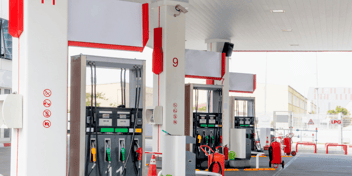Private equity firms often leverage sale and leaseback transactions as a financial tool to unlock liquidity, optimize balance sheets, and enhance returns. Some may even say that the sale and leaseback has become part of the playbook in order to maximize the financial engineering associated with M&A, particularly in more liquid markets such as North America and Europe. These transactions involve selling a property owned by a portfolio company to a third party while simultaneously entering into a long-term lease agreement to retain operational use of the property. Timing, however, plays a crucial role in maximizing the value of such transactions. This article examines the pros and cons of executing sale and leaseback arbitrage during the acquisition process versus post-acquisition.
Sale and Leaseback at Acquisition
Pros:
- Optimized Acquisition Financing: By incorporating a sale and leaseback at the time of acquisition, private equity firms can reduce the initial equity contribution required for the transaction. The proceeds from the target’s property sale are used in the cap stack, directly offsetting the initial equity investment required, improving the firm’s return on equity (ROE).
- Streamlined Negotiations: Buyers can negotiate better lease terms when structuring the transaction as part of the initial acquisition. The simultaneous transaction provides an opportunity to align the lease structure with the strategic goals of both the private equity firm and the operating company.
- Higher Valuation Certainty: Real estate market conditions and property valuations are known variables at the time of acquisition. This minimizes the risk of future market volatility impacting the value of the property.
- Immediate Liquidity: Sale and leaseback transactions at acquisition can provide immediate liquidity, which may be reinvested into operational improvements, growth initiatives, or debt reduction.
Cons:
- Complexity in Deal Structuring: Adding a sale and leaseback component to the acquisition process can increase the complexity of negotiations, requiring alignment among the buyer, seller, and real estate investors.
- Expedited Transaction Timeline: Conducting a sale and leaseback at acquisition requires a faster timeline for the sale and leaseback as the transaction needs to close within the M&A timeline. As a result, an expedited process is needed in order to ensure that the sale and leaseback will be ready to close alongside the acquisition. This can be a challenge specially for larger portfolio transactions and especially if there are locations across different countries.
Sale and Leaseback Post-Acquisition
Pros:
- Leverage Operational Improvements: Post-acquisition, private equity firms may focus on operational improvements that increase the profitability and stability of the portfolio company. This enhanced operational performance can strengthen the credit profile of the tenant (portfolio company), potentially resulting in higher property valuations and more favorable lease terms.
- Flexibility in Timing: Waiting to execute a sale and leaseback allows firms to time the transaction to coincide with favorable real estate market conditions, thereby maximizing proceeds when the market is strong.
- Reduced Deal Complexity: Separating the sale and leaseback from the acquisition process simplifies initial negotiations and reduces the pressure to coordinate multiple parties simultaneously.
Cons:
- Missed Initial Liquidity Opportunity: By postponing the sale and leaseback, private equity firms forgo immediate liquidity that could have been used for initial equity or debt reduction, growth initiatives, or other strategic uses for the business.
- Higher Transaction Costs: Executing the sale and leaseback as a standalone transaction may involve higher and duplicative administrative, legal, transfer, tax, and other transaction costs compared to structuring it concurrently with the acquisition.
Strategic Considerations
Private equity firms should evaluate the following factors when deciding the timing of a sale and leaseback:
- Market Conditions: Assess the current and forecasted state of the real estate market.
- Portfolio Company Financials: Consider the credit profile, cash flow stability, and growth potential of the portfolio company.
- Deal Objectives: Align the sale and leaseback strategy with the overall acquisition and value-creation plan.
- Stakeholder Alignment: Ensure that all stakeholders, including portfolio company management and real estate investors, are aligned on the timing and terms of the transaction.
Conclusion
Both approaches to sale and leaseback strategies —at acquisition and post-acquisition—offer unique advantages and challenges. For private equity firms, the decision ultimately hinges on the specific dynamics of the respetive M&A deal and the operational and value creation strategy for the portfolio company. To learn more about these two approaches, follow the links below to read about prior simultaneous and post M&A sale leasebacks that the Ascension team has executed on behalf of our clients:
- M&A of Protein Distributor
- M&A of Food Service Equipment Provider
- Twenty-Three Property Portfolio Sale Leaseback
- 21,500 square meter industrial sale and leaseback for OKECHAMP Group
- Operio Group's $11M Sale Leaseback


.webp?width=1858&height=924&name=M%26A%20or%20Post%20M%26A%20(1).webp)



Leave a Comment